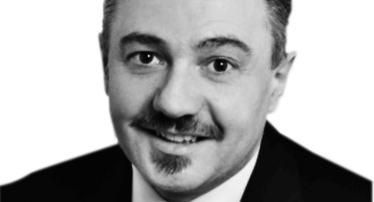When it comes to biosimilar development, companies must thoroughly characterize both the originator and the new candidate to demonstrate biosimilarity. Fortunately, in-depth analysis is easier than ever before…
The biopharma industry demands consistent quality and batch-to-batch comparability, which means that the in-depth characterization of a protein therapeutic and any modifications, such as glycosylation, is essential. The Christian Doppler Laboratory for Biosimilar Characterization, located at the University of Salzburg in Austria, has set out to address the challenges presented by protein analysis by seeking to develop and validate new techniques for characterizing therapeutic proteins. And to help with the mission, the laboratory looked to the expertise found at Thermo Fisher Scientific.
Contributors
Christian Huber, Professor of Chemistry for Biosciences at the University of Salzburg

“I am an analytical chemist by training and have been involved in method development for biochromatography and biological mass spectrometry for almost 25 years.”
Christian Huber, Professor of Chemistry for Biosciences at the University of Salzburg
Therese Wohlschlager, Postdoctoral Fellow in the Christian Doppler Laboratory for Biosimilar Characterization

“I am a biotechnologist by training and developed a strong interest in glycobiology and glycan analysis during my studies at BOKU Vienna and ETH Zurich.”
Therese Wohlschlager, Postdoctoral Fellow in the Christian Doppler Laboratory for Biosimilar Characterization
Julia Tevini, Master Student in the Christian Doppler Laboratory for Biosimilar Characterization

“I’ve been attending all courses offered by Christian Huber's group including bioanalytics and structural biology or systems biology, and they were able to pique my curiosity for bioanalytics –especially for chromatography and mass spectrometry.”
Julia Tevini, Master Student in the Christian Doppler Laboratory for Biosimilar Characterization
Frank Steiner, Scientific Advisor at Thermo Fisher Scientific

“My professional experience, which I can use in my role as Scientific Advisor in Thermo Fisher Scientific, stems both from academia and the scientific instruments industry.”
Frank Steiner, Scientific Advisor at Thermo Fisher Scientific
What makes protein characterization such an exciting field?
Christian Huber: What I really like in bioanalytical chemistry is the strong craft aspect of developing and employing novel analytical methods to bioanalytics. One has to combine technical, physical, and chemical knowledge with a significant amount of intuition and endurance to be able to provide new approaches of looking into the secrets of life.
Therese Wohlschlager: From an analytical point of view, I am fascinated by pushing the limits in (glyco)protein characterization on an intact level. Bottom-up characterization of proteins is well established and relatively straightforward to perform, but information on different proteoforms, such as glycosylation variants, is limited when characterization is performed at the peptide level. In contrast, intact protein analysis may reveal the existence and composition of different protein variants.
Julia Tevini: I’m overwhelmed by the fact that our working group is able to address questions or problems in the whole field of “-omics”. It’s also fascinating because we are not only addressing the technical challenges of instrumental techniques, but also dealing with biological questions.
Frank Steiner: Most of the chromatography work throughout my career was dedicated to chromatography of small molecules, where a very detailed understanding of the separation mechanisms evolved, even down to interactions at the molecular level. With proteins, we are not yet anywhere near to that understanding, but I’m very optimistic that we can make it there and this will help to significantly improve chromatographic column chemistries and methods for characterizing biopharmaceuticals.
How did the collaboration begin and what does it entail?
CH: The idea of initiating a Christian Doppler Laboratory for Biosimilar Characterization came from a colleague at the Department of Molecular Biology, who is also currently Vice Rector of Research at the University of Salzburg. I began collecting the expertise of some of my colleagues in our departments and of former PhD students now working at Sandoz in order to focus on the development and validation of novel tools for the in-depth characterization of biopharmaceuticals. In fact, I have been collaborating with people at Thermo Fisher Scientific (then LC Packings and later Dionex) since the late 1990s.
TW: The collaboration with Thermo Fisher Scientific spans the fields of chromatography, mass spectrometry, and software development. With regard to chromatography, we are working on systematic characterization of intact protein separations by ion-pair reversed phase chromatography. Separation of intact proteins is not only interesting from a chromatographic point of view, but is also gaining importance in biopharma characterization, as well as top-down mass spectrometry. We are currently exploring the influence of protein structure on retention times under isocratic conditions. On the other hand, we are also studying the effects of gradient conditions on protein separations, as well as the influence of column chemistry or stationary phase morphology using the new Thermo ScientificTM MAb PacTM RP protein column.
FS: Christian’s lab has traditionally used our high-performance liquid chromatography (HPLC) instruments, but when the project first started, the lab did not have access to a Thermo ScientificTM VanquishTM Flex UHPLC System, which has been designed and manufactured to exacting engineering standards to be truly built for biopharma. The collaboration has given them access to this system and I’m really looking forward to seeing how different columns and chemistries developed for biopharma analysis perform on the Vanquish Flex UHPLC in the hands of Christian and his team.
How has the Vanquish Flex UHPLC system performed so far?
CH: As all major HPLC vendors are offering systems of very high standards in terms of performance and reliability, I initially thought it would be very difficult to introduce significant advances in instrumentation for HPLC. Nevertheless, seeing the concepts realized in the Vanquish Flex UHPLC system, I was pleasantly surprised that a number of features, including temperature control, sample pre-compression, high precision gradient formation, and low dead volume connections finally result in a significant improvement of method robustness and transferability.
JT: When the Vanquish Flex UHPLC system was first installed I thought it was very futuristic! But in addition to being stylish, it has a lot of genuinely useful features; the two thermostatting modes of the column compartment, the new injection technology, including the metering device, and the sample pre-compression really caught my eye. In comparison to the Ultimate 3000 (Thermo ScientificTM DionexTM Ultimate™ 3000 BioRS System), we are able to set lower flow rates, which is an advantage regarding our plans for protein chromatography in 1 or 2-mm column formats.
TW: We are currently exploring the new features of the system. The two thermostatting modes of the column compartment (forced and still air) allow for the investigation of the effect of isothermal and adiabatic conditions on intact protein separations. The extended temperature range (5 to 120°C) enables us to study separation of monoclonal antibodies at elevated temperatures, which has been described to be favourable. Another feature is the new DAD detector, which allows detection at different wavelengths. In intact protein separations, we profit from the acquisition of a UV-spectrum (190 to 500 nm) as the wavelength of maximum absorbance for a specific protein can be identified. Finally, Viper connections (Thermo ScientificTM DionexTM ViperTM Fingertight Fittings) throughout the system allow easy handling and high robustness of the system – which is really important.
What are the main analytical challenges moving forward?
CH: Since an intact structure is a major component of drug safety and efficacy, manufacturers have to implement comprehensive measures of quality control and assurance. We are trying to integrate new and emerging technologies, including (U)HPLC, high-resolution mass spectrometry (HRMS), high-performance capillary electrophoresis, bioinformatics, chemical protein synthesis, and biochemical protein characterization into systematic workflows of biosimilar characterization that are suitable for application in an industrial environment.
TW: Complexity in protein therapeutics arises from protein modifications (glycosylation), which may directly impact a drug’s safety and efficacy. It is our goal to identify and quantify these protein variants, which may be present in only minor amounts. Besides in-depth characterization of the therapeutic protein itself, we are working on methods for host cell protein (HCP) detection in the final product, as well as in samples from different purification stages.
FS: There are several chromatography modes for characterizing biopharmaceuticals that are putting defined requirements on the system and system control. Size exclusion chromatography for aggregate analysis requires a system with very low extra column band broadening. When aggregates of an antibody and fragments need to be separated from the pure antibody, even minor external dispersion can destroy these challenging separations. Other examples are the accurate generation of pH-gradients for charge variant analysis, or the use of high salt contents for hydrophobic interaction chromatography to analyze proteins in the native state – not every instrument can handle this salt freight robustly. To separate intact proteins with the best possible efficiency for identifying even minor structural differences, reversed phase chromatography on polymer based columns at elevated temperatures can be very effective.



















